Last updated on
The pantry challenge is a month-long endeavor wherein individuals or families aim to save money and reduce food waste by creatively utilizing the items already present in their pantry before purchasing additional groceries.
The Pantry Challenge is a popular trend that encourages individuals to utilize the items already in their pantry, instead of purchasing new groceries. This challenge not only helps to reduce waste and save money, but it also sparks creativity in meal preparation.
Whether you’re looking to declutter your pantry or simply stretch your budget, the Pantry Challenge offers a practical solution.
Delve deeper into this article to understand the intricacies of the Pantry Challenge, including how to start, tips for success, and potential benefits.
Key takeaways:
- Build an accurate inventory of your current food supplies.
- Set a modest feeding budget for necessary purchases.
- Develop a meal plan based on available goods.
- Continue to exhaust your pantry until you deplete most or all of the supplies.
- Embrace creativity and the opportunity to experiment with new dishes.
Understanding the Pantry Challenge Rules

The basic pantry challenge principles involve using items already in your home instead of making purchases. Initially, you will need to build an inventory of your existing pantry items, including food in your freezer and refrigerator. This inventory will form the basis of your meals and snacks throughout your challenge.
Secondly, set aside a feeding budget, which might be a bit lower than your standard weekly or monthly food budget. The difference you’ll intend to save or spend only on essential items that aren’t in your storage like milk or fresh produce.
Lastly, develop a meal plan around these available goods, focusing on sustainability and health. Don’t think of this as a period of deprivation, rather an opportunity to practice creativity in your cooking. Here are some critical points to keep in mind:
- Build an accurate inventory of your current food supplies.
- Set a modest feeding budget for necessary purchases.
- Develop a meal plan based on available goods.
- Continue to exhaust your pantry until you deplete most or all of the supplies.
- Embrace creativity and the opportunity to experiment new dishes.
- Aim for balanced meals to maintain health and satisfaction.
Remember, the challenge is not a strict regimen, but a flexible program that adjusts to individual lifestyles. Establish your rules and adapt as needed.
Setting a Goal for Your Pantry Challenge

Firstly, decide the main objectives of the pantry challenge, taking into consideration factors like saving money, reducing food waste, decluttering the pantry, or experimenting with new recipes.
Then, formulate the challenge rules. For instance, decide if the challenge pertains only to dinners or includes all meals and snacks. Determine the exceptions, if any – items that can be bought during the challenge, for essential nutrition or dietary reasons.
All these factors significantly shape the course of the pantry challenge, making them crucial from the outset.
Key Points:
- Identifying main objectives – saving money, reducing waste, decluttering, culinary experiments.
- Defining challenge scope – dinners only, all meals, snacks included.
- Determining exceptions – essential nutrition items, dietary needs.
These considerations not only provide a direction but also influence the level of difficulty and results of the challenge.
Preparation Steps for the Pantry Challenge

First, conduct an inventory check of your pantry, including dry goods, canned items, and frozen foods that can be maximized during the challenge. This will also ensure that nothing expired or rotten is lingering in your food storage areas.
Next, make a catalog of your findings, listing the ingredients and, if helpful, their quantities. This can be as simple or as detailed as you like.
Familiarize yourself with easy, flexible recipes that can utilize a variety of ingredients you have on inventory. This is where online resources come in handy, as there are various recipe databases and blogs that allow you to input what ingredients you have and provide potential recipes.
Last**l**y, make it a point to involve your household in the challenge. Explain the goal, rules, and duration to all participants. This not only makes it more enjoyable but also ensures everyone understands the implications of their food choices during this period.
Remember, the pantry challenge is not meant to starve you or deny you enjoyment from food. Its purpose is to prompt creativity, eliminate food waste, and save money. Only take on the challenge when you feel mentally ready and not pressured or stressed.
Determining the Duration of the Pantry Challenge

When deciding how long your pantry challenge will last, personal circumstances play a critical role. No rules dictate the correct length as the pantry challenge is a highly individual endeavor. Consider these factors:
- Family size: Larger families might need shorter challenges due to greater food consumption rates.
- Existing inventory: If your pantry, refrigerator, and freezer are brimming, your challenge can last longer.
- Personal comfort: Some find running low on staples stressful. Gauge your comfort level.
- Goal alignment: If your primary objective revolves around saving money, a longer challenge may be useful.
- Time constraints: Meal planning and creative cooking can be more time-consuming. Evaluate your availability.
Remember, whether it’s one week, one month, or longer, significant benefits can be reaped no matter the duration. Tailor the challenge to your lifestyle for a genuinely effective experience.
Actual Involvement in the Pantry Challenge
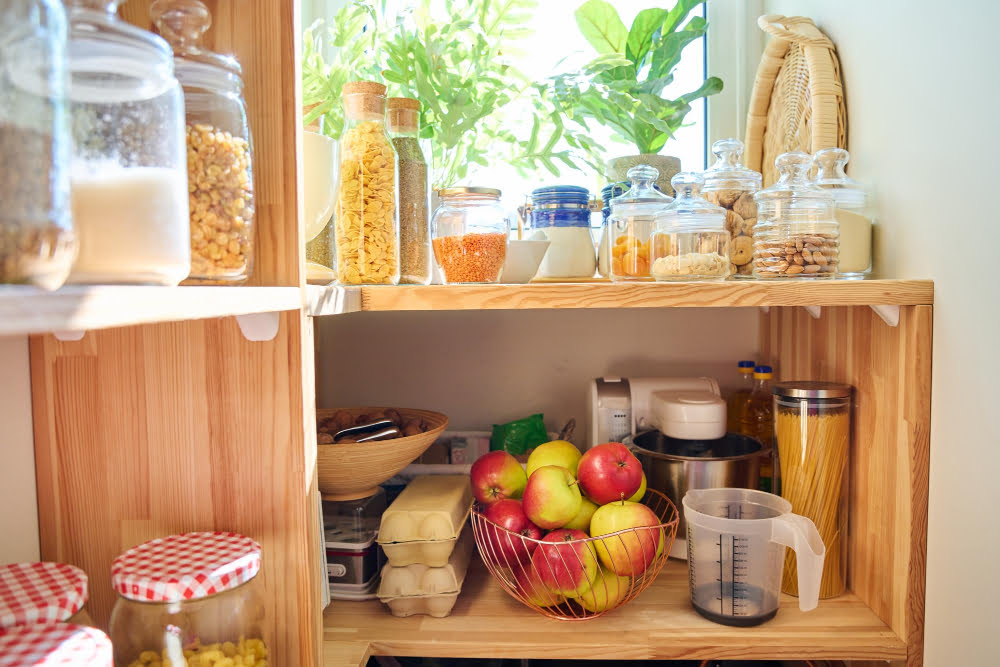
Moving beyond preparing for the Pantry Challenge, actively participating in it demands a fair amount of creativity and resourcefulness.
1. Consuming and optimizing the food in the pantry is a fundamental aspect. Avoid grocery shopping and start finding ways to incorporate the neglected food items lying in your pantry into daily meals.
2. Regularly update the inventory list. With every meal prepped from the pantry contents, strike off the components used.
3. Get innovative with the recipes. Use online tools, like ingredient recipe finder, can be invaluable in making diverse and savory dishes with pantry items.
4. Breaking the monotony is crucial. Repeating the same meals can quickly lead to losing interest. Experiment with different flavors, cuisines, or cooking styles.
5. Involve the whole household. The challenge isn’t just solitary; it can be a stirring family activity. Everyone can contribute their ideas to craft edible masterpieces out of pantry supplies.
How to Effectively Prepare for Your First Pantry Challenge

Effectively preparing for a pantry challenge entails several crucial steps. First, it’s essential to take stock of all the items currently in your pantry, fridge, and freezer. This inventory becomes the cornerstone of your meal plans. Note down everything you have, from canned foods and pasta to fresh produce and meats.
Next, think about potential meal plans that can incorporate these ingredients. Having a clear plan prevents confusion and ensures you utilize all the available resources wisely. Consider breakfast, lunch, dinner, and snacks to avoid missing out on any mealtime. At the same time, remember that flexibility is key, as you might need to adjust your plan as ingredients run out.
Lastly, establish some ground rules for shopping during the challenge. Decide whether you’ll allow yourself to buy fresh produce or necessities such as milk and eggs during the challenge, depending on your family’s dietary needs and preferences. Stick to these rules to reap the maximum benefits of the pantry challenge.
Remember, the key to effective preparation lies in thorough inventory, strategic meal planning, and strict shopping rules.
Potential Money Saving With a Pantry Cooking Challenge

A properly executed Pantry Cooking Challenge could result in significant financial savings.
1. Decreased Grocery Expenses: By utilizing items already on hand, the need for additional grocery purchases diminishes, leading to lower weekly or monthly grocery bills.
2. Reduced Food Waste: Often, consumables get overlooked or forgotten, causing them to spoil. This challenge helps ensure these items are used before their expiration dates, reducing overall waste.
3. Slash Dining Out Costs: With a concentration on home-cooked meals, the frequency of dining out can be curtailed, leading to saved finances.
4. Better Budget Management: By paying closer attention to the food costs, one can develop more effective budgeting skills. Money saved can be allocated to other necessary expenses or saved for future needs.
Remember that the results can vary based on the household size, the pantry’s existing content, and the commitment level towards the challenge. Stay flexible but focused to realize the full potential of this money-saving venture.
Meal Planning Strategies During a Shelf Cooking Challenge
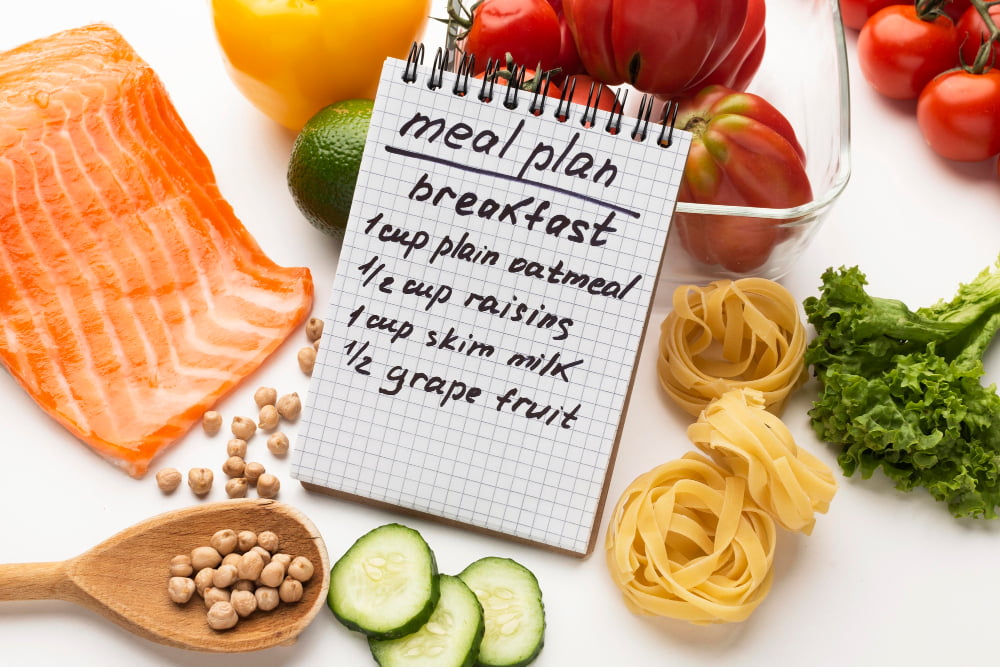
1. Inventory: Begin by assessing what is currently in stock in your pantry, fridge, and freezer.
2. Themes: Plan meals around a specific theme to create variations using the same core ingredients.
3. Use Recipe tools: Some online tools allow you to input ingredients you already have and generate potential recipes.
4. Mix and Match: Try to create a balance of proteins, carbohydrates, and fruits or vegetables in each meal.
5. Leftovers: Try to incorporate leftovers from one meal into another to avoid wastage.
6. Cooking Methods: Opt for multiple cooking methods like baking, grilling, sautéing to create meal diversity.
7. Use of Dry Goods: Consider meals that can utilize dry goods sitting idle in your pantry, such as pasta, rice, or canned items.
8. Bulk meals: Consider meals that can be cooked in bulk and consumed over several days.
9. Meal Prep in Advance: If time allows, meal prepping can alleviate some of the daily cooking pressures.
10. Flexibility: Lastly, stay flexible. If an ingredient is missing or dwindling, get creative, and substitute with what’s available.
Unleashing Creativity: Cooking With What You Have
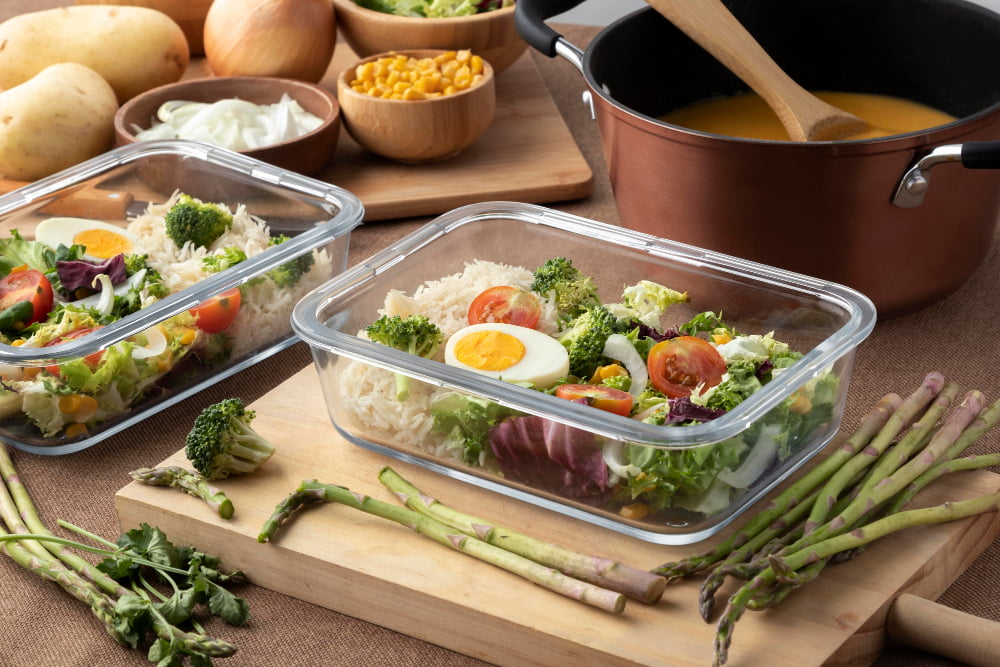
Leveraging existing ingredients can foster an artistic approach to meal preparation.
1. Experimental Recipes: Engage with the unknown by trying new combinations of foods. Remember, necessity is the mother of invention.
2. Themed Nights: Use themed night ideas such as ‘Pasta Thursday’ or ‘Soup Sunday’ to use specific ingredients or categories of food.
3. Multiple Uses: Be open-minded about how you use items. Rice can be a side, main dish, or dessert, while a can of beans can become a salad, main course, or even a dip.
4. Online Recipe Generators: Utilize online tools that generate recipes based on what you have on hand.
5. Recipe Substitutions: Explore online resources for ingredient substitutions. That way, you can adapt recipes based on the ingredients you already have.
6. Cooking Techniques: Experiment with different cooking techniques such as broiling, roasting, grilling, or sautéing to change an ingredient’s flavor and texture.
By thinking innovatively, and daring to dabble in unknown territories of culinary arts, not only will your meal times become fun and exhilarating, but also cost-effective.
Tips for a Successful Pantry Challenge Execution
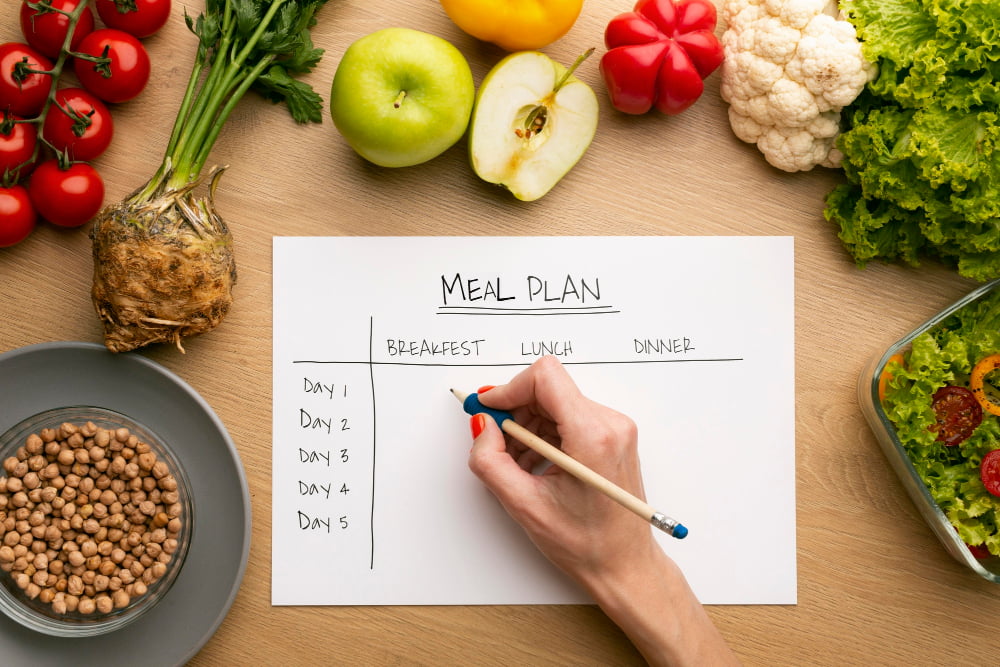
1. Create a Meal Plan: Use the inventory list to plan meals around the items found in your pantry, fridge, and freezer. Consider the perishable items first to avoid waste.
2. Set Aside a Minimal Budget: Even during a pantry challenge, you might need some basics like bread, milk, or fresh produce. So, it’s essential to earmark a small budget for these necessities.
3. Embrace Flexibility: If the recipe calls for an ingredient not in the pantry, substitute it with something you have, or omit it altogether.
4. Involve the Whole Family: Let everyone be part of the meal planning and preparation process. They can all pitch in with creative meal ideas or assistance in making dishes.
5. Resist Grocery Store Sales: It’s easy to get swayed by great deals, but remember the goal of the challenge — to use up the items you already have.
6. Stay Positive: A pantry challenge might get difficult after a few days, especially with cravings. Try to keep a positive attitude and focus on the benefits.
7. Document Progress: Keep a record of the meals made, money saved, and lessons learned. This can be motivating and provide valuable insights for future pantry challenges.
Challenging Yourself to Eat Down the Pantry
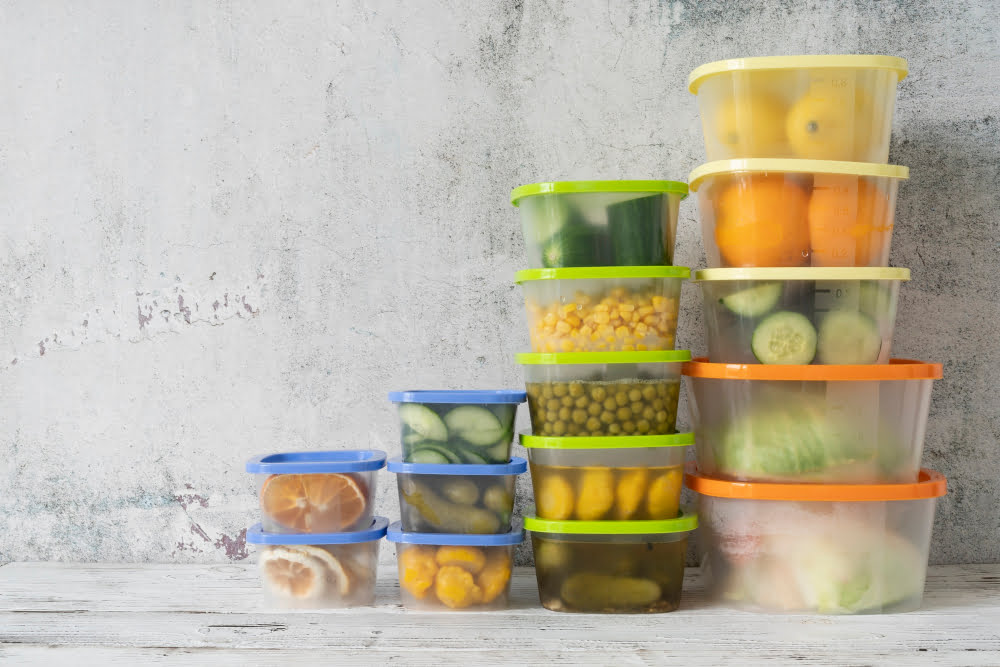
A significant aspect of the pantry challenge involves employing strategic eating habits to gradually reduce your existing food stock:
1. Begin by targeting perishable food items to prevent them from spoiling.
2. Layer your meals, starting with the most perishable items and ending with the longest lasting ones.
3. Consider creating mix-and-match meals using assortments of foods from your pantry.
4. Make use of your freezer items such as frozen vegetables, meats, or fully prepared meals.
5. Aim for a zero waste approach, using food scraps as compost, or in stock preparations.
6. Allow room for creativity and flexibility, turning traditional recipes into pantry-friendly ones.
7. Use grains or canned foods wisely, as they tend to have extended shelf-lives.
8. Keep track of the dwindling pantry stock to monitor progress and identify foods you frequently utilize.
9. Focus on nutrient-filled options, maintaining a balanced diet even while working with a varied selection.
Post-Challenge Actions: Shopping and Restocking After a Pantry Challenge

Following the pantry challenge, it’s crucial to gradually restock shelves with staples and versatile ingredients. Rather than an immediate bulk shopping spree, consider three critical actions:
1. Evaluate Necessities: Reflect upon the items you missed most during the pantry challenge, and prioritize purchasing these alongside basics like oils, spices, and grains.
2. Purchase Smart: Use coupons, weekly sales, and discount stores to replenish items gradually, spreading the cost over several weeks.
3. Reevaluate Habits: The pantry challenge most likely highlighted areas of food waste or impulse buying; use this awareness to create a new, economical shopping approach.
Consistent adherence to these points will not only help renovate the pantry but also instill a more mindful and financially responsible grocery shopping habit.
Surveying Your Current Pantry Inventory

To kick-start the pantry challenge, a comprehensive survey of your existing inventory is an absolute priority.
1. Begin by emptying the pantry, visually categorizing each item.
Create a list as you go along, noting the quantity of each item for future reference. Remember, no aisle needs to be left unexplored — from the back of your freezer compartments to the deep ends of your refrigerator.
2. Once the list is done, think about the shelf life of each item. Identify and group together the items close to their expiration date.
3. An essential element of this survey is understanding the mix of ingredients you have at hand. Divide them into basics (like rice, pasta, canned goods), condiments (sauces, spices, herbs), and extras (specialty cooking items or snacks).
4. Finally, consider each item’s versatility. How many different meals can you create with the ingredients you have?
The primary goal is to make the best use of existing resources without unnecessary wastage, thereby translating into money saved over the challenge’s duration.
Dealing With Cravings and Specialty Ingredients During the Challenge

Addressing cravings during the Pantry Challenge is a matter of creative substitution. Try using ingredients on hand to emulate favorite treats. Examples include baking a homemade batch of cookies instead of purchasing a store-bought pack.
Never disregard the power of spice. Seasonings have the uncanny ability to reimagine the flavor of standard ingredients. Even the humblest beans or rice dish can come alive with various spices or herbs.
Remember that cravings often pass. By waiting a while, you might find your longing for a specific food becomes less intense. Stay hydrated as sometimes the body confuses thirst with hunger.
When dealing with specialty ingredients, utilize the versatility principle. For instance, if a recipe calls for creme fraiche but you lack this in your pantry, substitute it with sour cream or yogurt.
Ensure to exercise a balanced diet. Though it’s a pantry challenge, it’s crucial not to compromise health. Include proteins, carbohydrates, and vitamins in your meals.
Look towards internationally inspired cuisine. Try re-creating dishes from various cultures as they are often designed around simple, staple ingredients.
A pantry challenge doesn’t mean you can’t enjoy delicious food. It’s more about re-discovering the potentials hidden in your pantry.
FAQ
What’s a pantry challenge?
A pantry challenge is a self-imposed task where individuals or families aim to eat primarily from existing food stock in their pantry, reducing food waste and saving money by limiting grocery shopping for a certain period.
What is the faithful pantry challenge?
The faithful pantry challenge is a strategic approach where you organize your pantry, create a meal plan, and commit to consuming all purchased items, leading to monetary savings, reduced waste, and healthier eating habits.
What is a pantry meal?
A pantry meal is a dish prepared primarily from staple ingredients typically stored in the pantry, such as rice, pasta, noodles, tuna, beans, and tomatoes, encompassing a wide range of foods including soups, pasta bakes, fritters and more.
How can a pantry challenge benefit your budget?
A pantry challenge encourages you to utilize existing food items at home, thereby limiting unnecessary grocery shopping and contributing to significant cost savings.
Can a pantry challenge lead to a healthier lifestyle?
Yes, a pantry challenge can lead to a healthier lifestyle by encouraging mindful consumption, creative cooking, and reducing food waste.
What are some essential tips for successfully completing a pantry challenge?
Successful completion of a pantry challenge requires planning meals based on existing pantry items, avoiding unnecessary grocery store visits, categorizing and rotating food items, and creatively using leftovers to minimize waste.
Recap:




